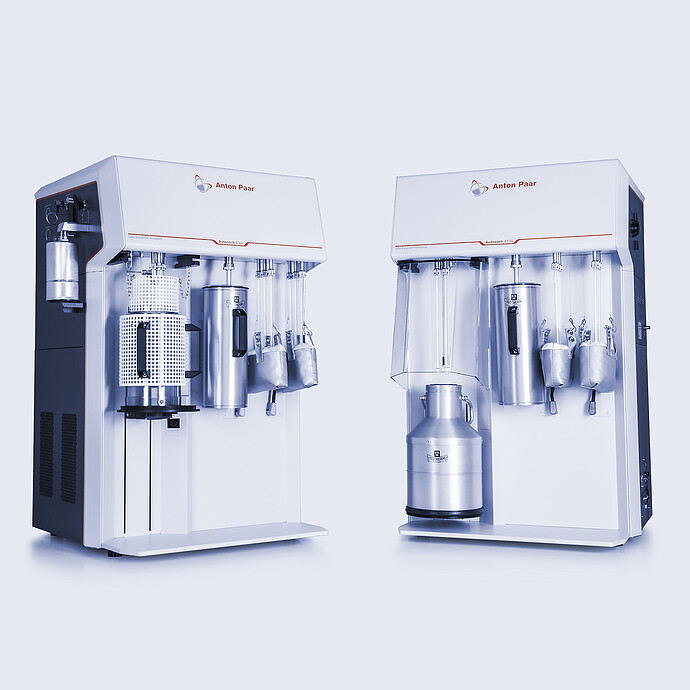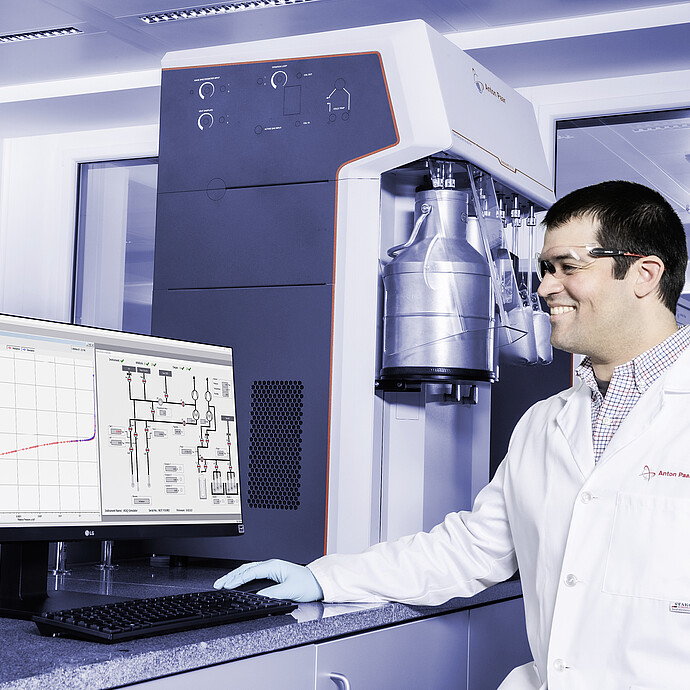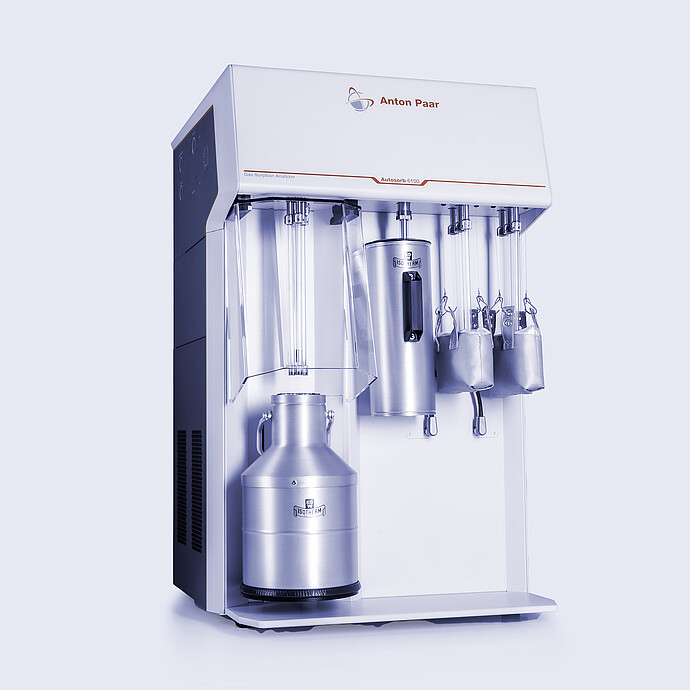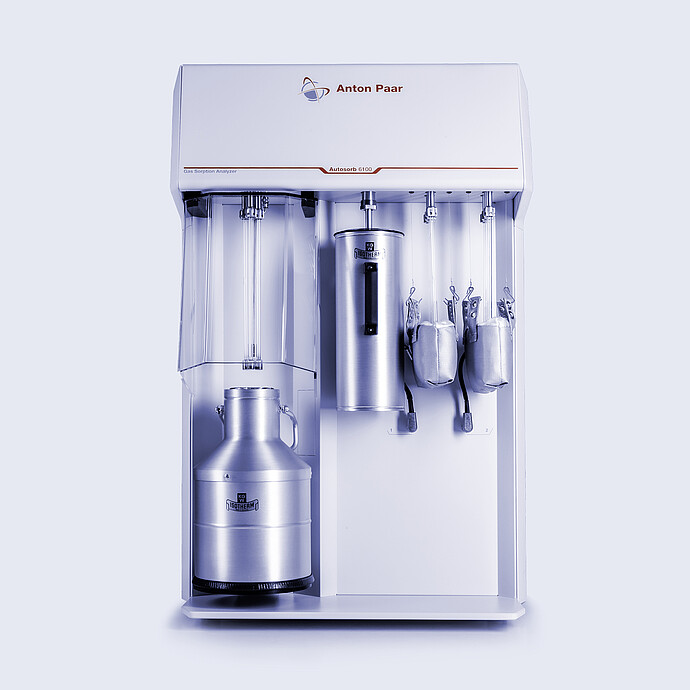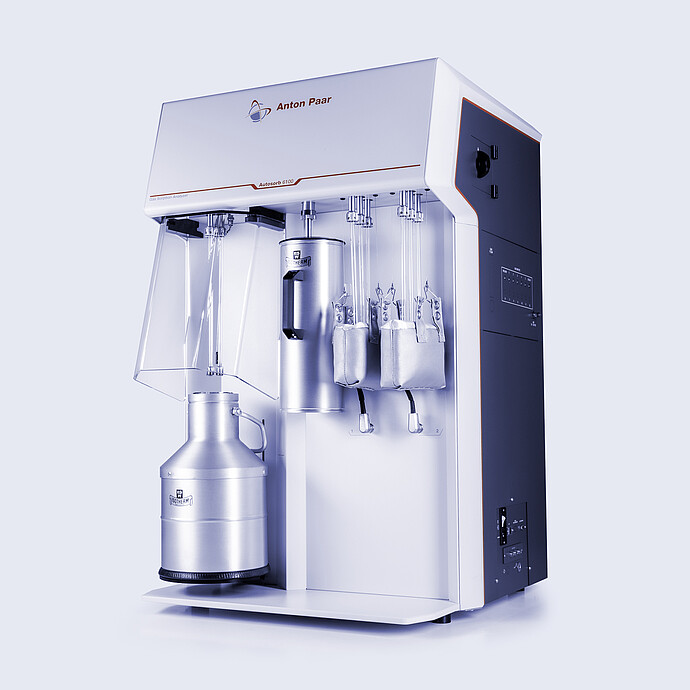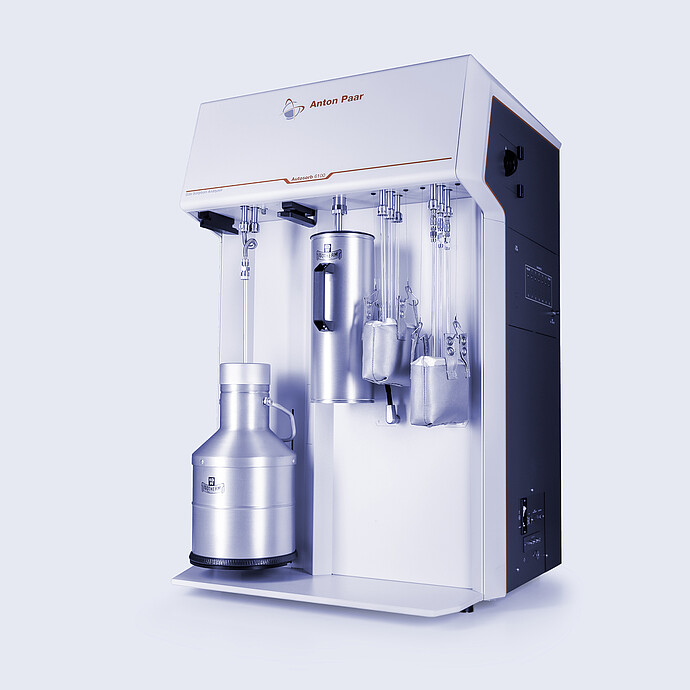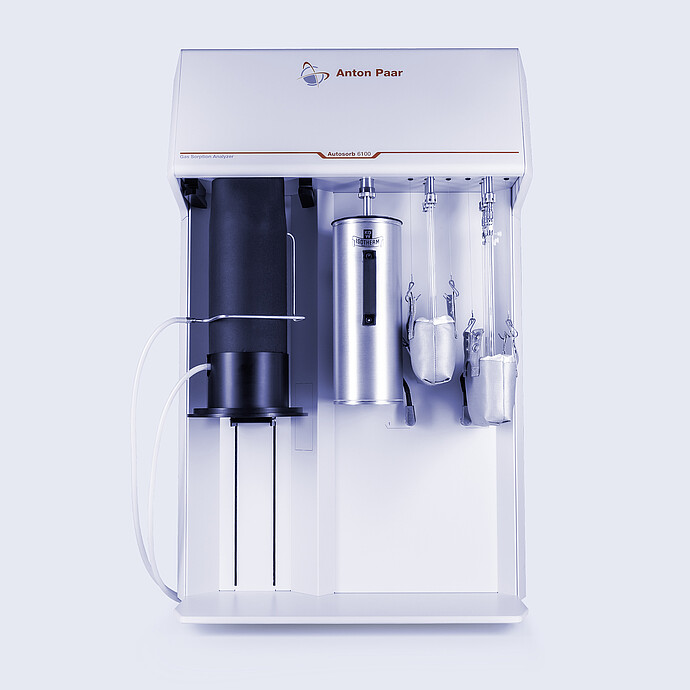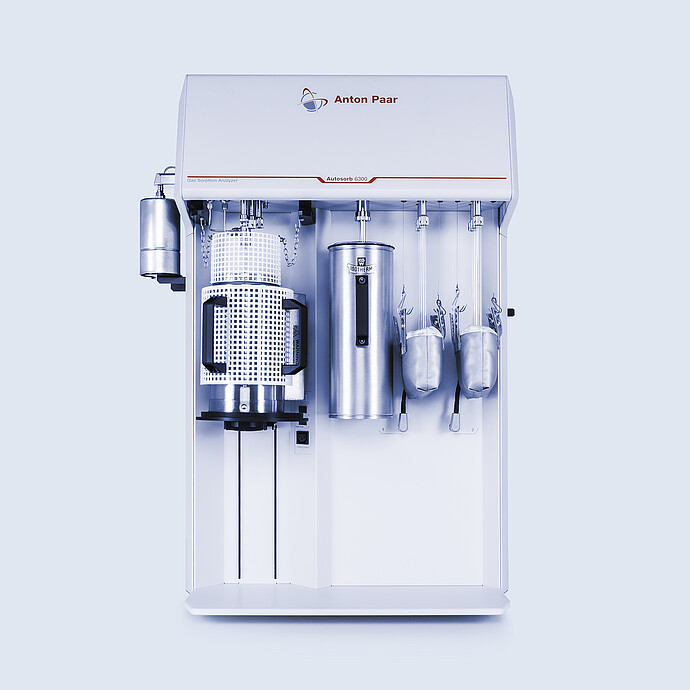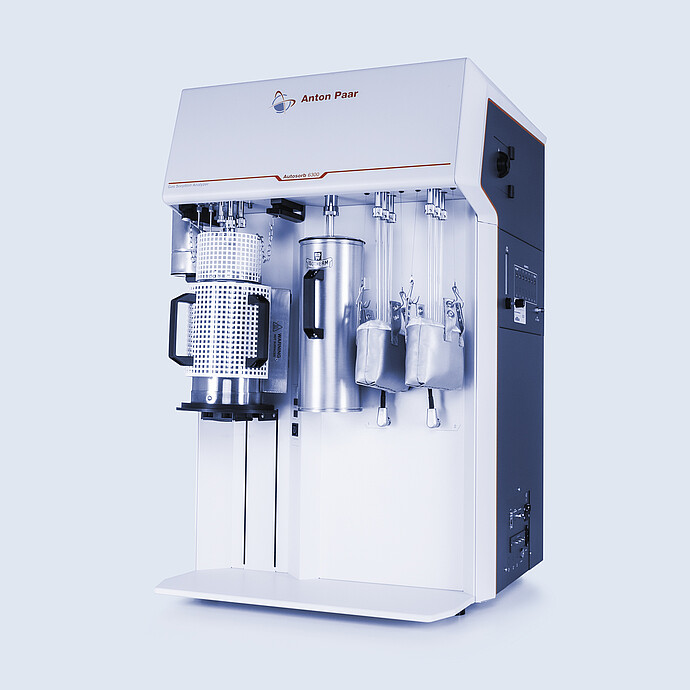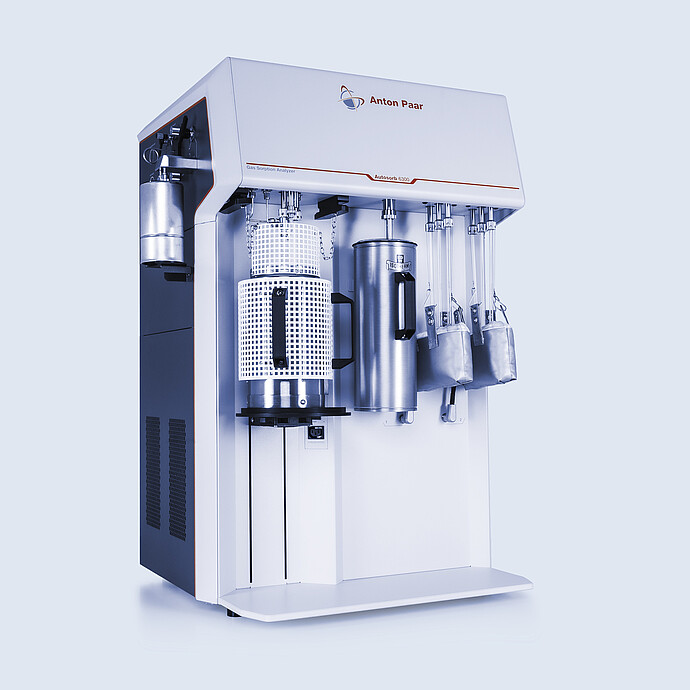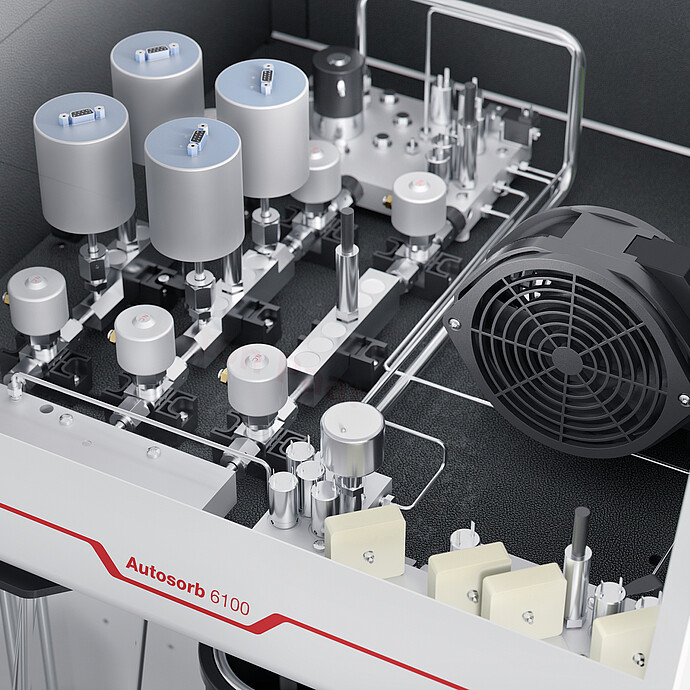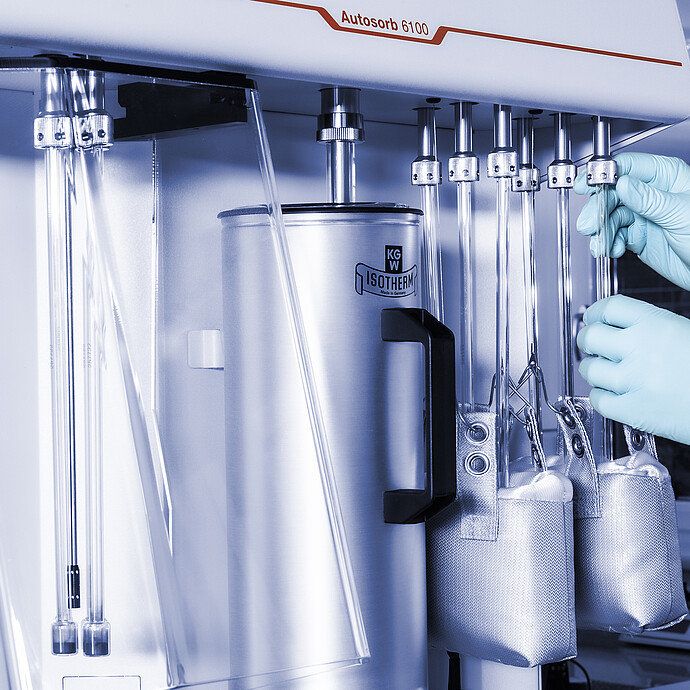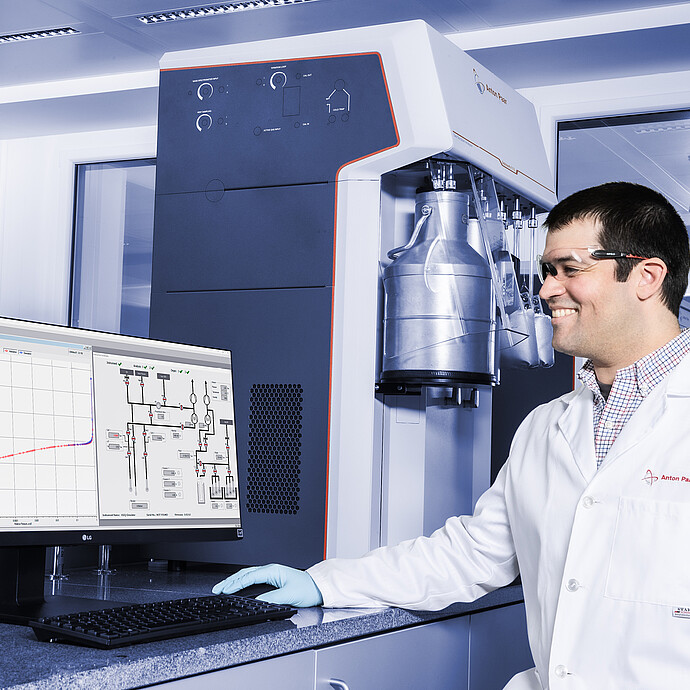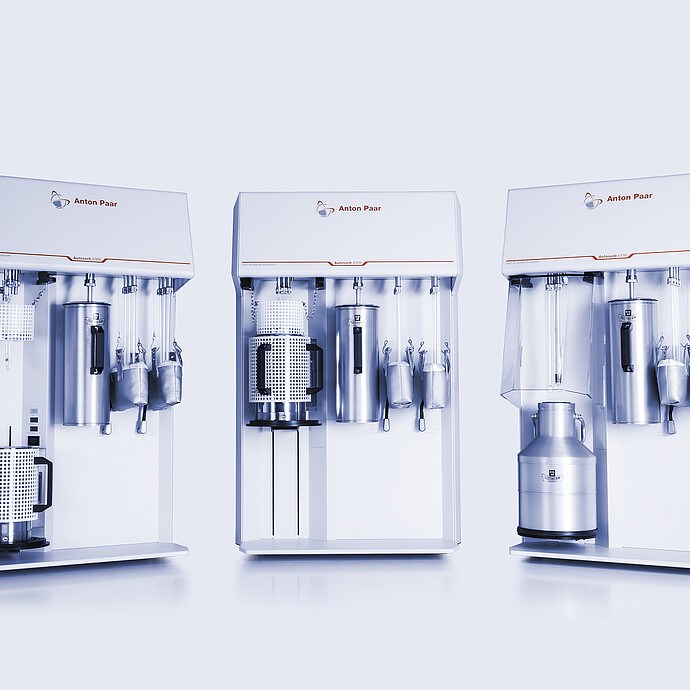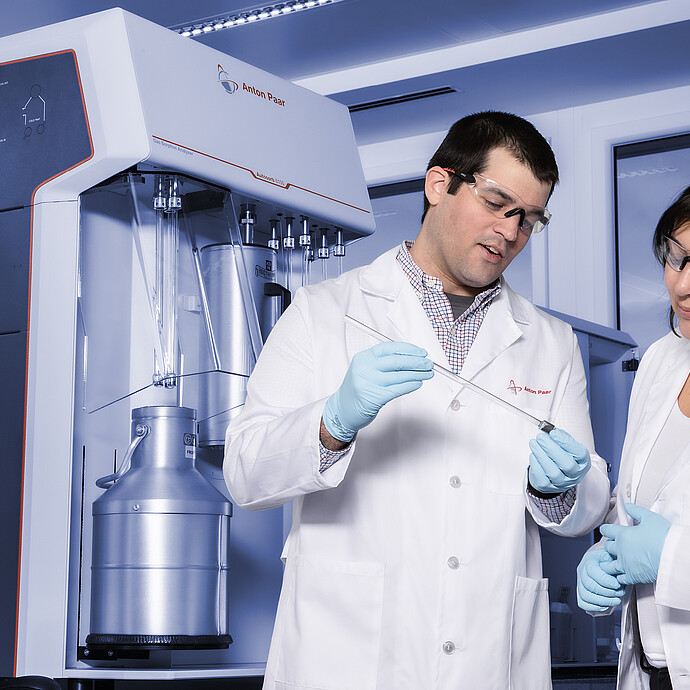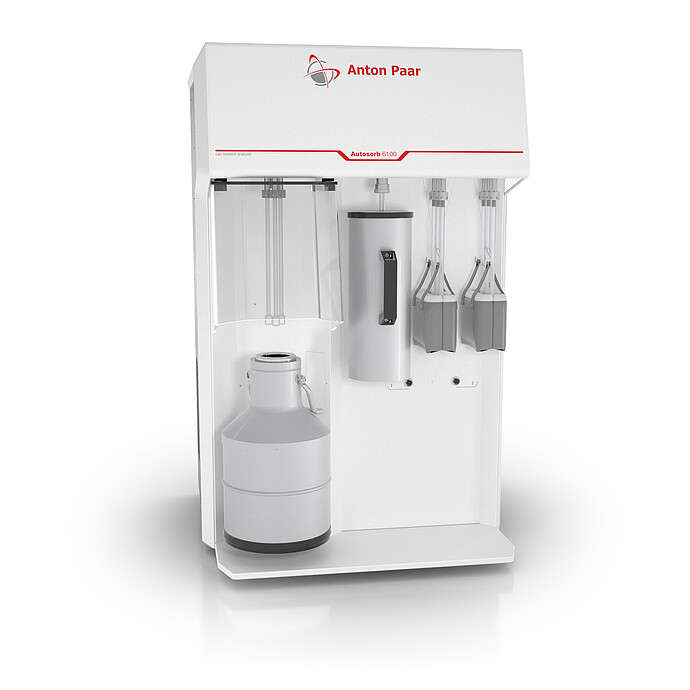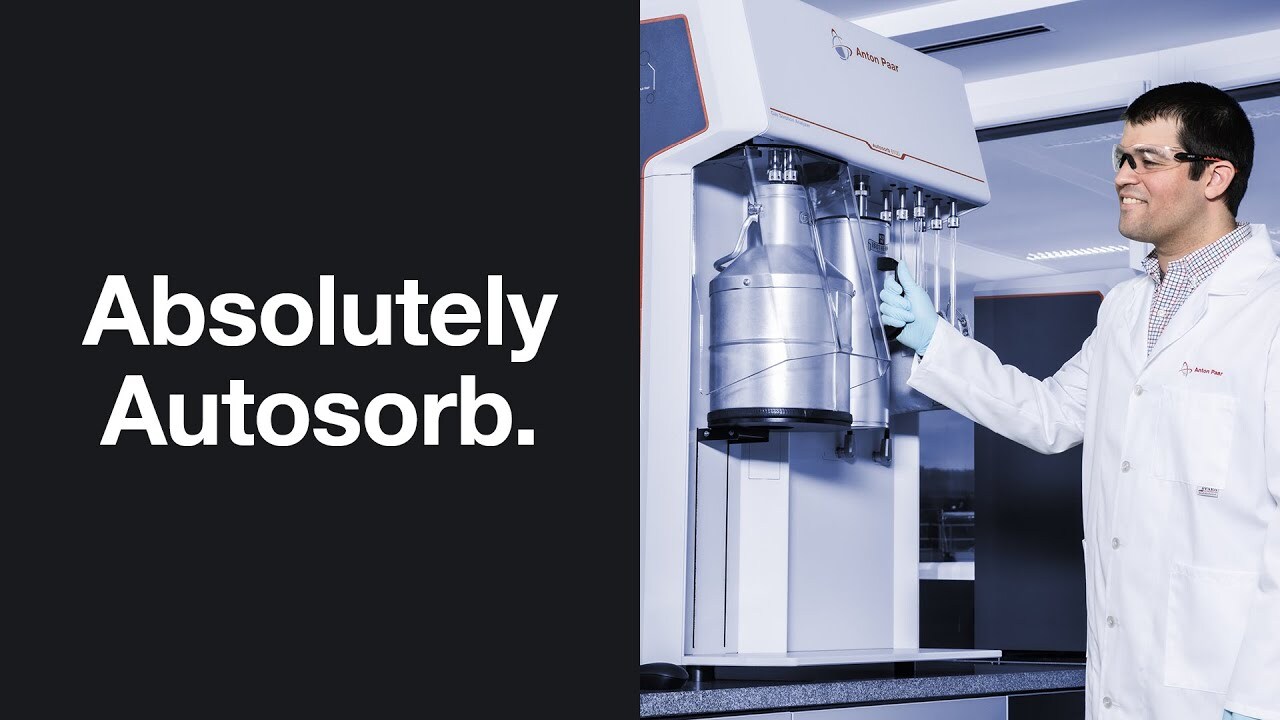High Vacuum Physisorption Analyzer:
Autosorb
- Accurate high vacuum physisorption analyses of surface area and micropores
- Advanced measurement routines made accessible with DoseWizard point selection and PowderProtect
- Up to three samples, three gases, and three temperatures can be measured simultaneously with independent analysis stations
Autosorb instruments are high vacuum physisorption and chemisorption analyzers designed for advanced measurements of BET surface area, active area, and pore size distributions. Independent analysis stations, exclusive TruZone active coolant control, and accessible Kaomi software let you meet your current measurement needs, while factory and field upgradeable options let you adapt to future ones. For your most important gas sorption measurements, the choice is clear: Absolutely Autosorb.
Key features
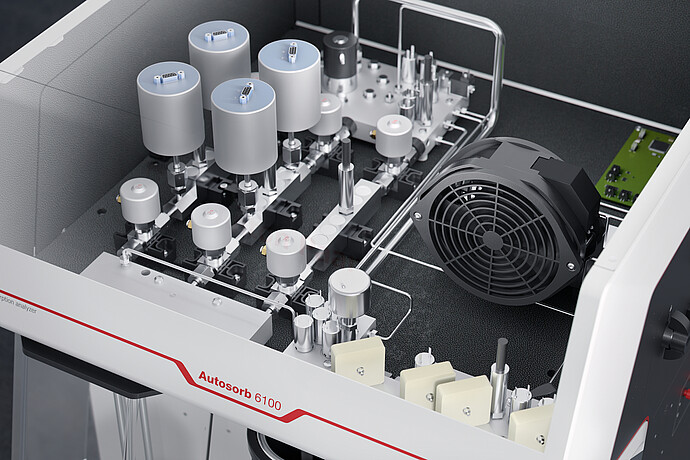
A gas sorption analyzer that’s absolutely accurate
- Get highly accurate physisorption measurements from relative pressures below 10-7 for nitrogen
- Leverage precise manifold temperature control between 35 °C and 50 °C
- Rely on TruZone active coolant level control for accurate data – even over lengthy analyses
- Achieve superior high vacuum performance (38 % better than previous generation instruments) with precision-machined manifolds and high-quality pneumatic valves
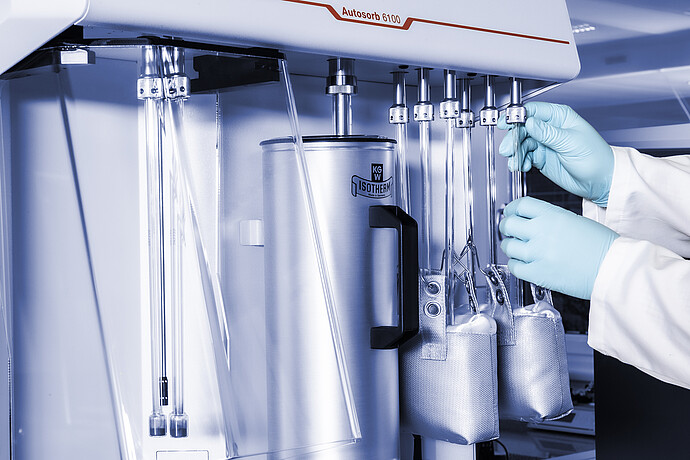
Independent stations ensure you’re absolutely agile
- Analyze up to three different samples with three different analysis gases at three different temperatures simultaneously with independent analysis stations and patented temperature control accessories
- Perform the most challenging physisorption measurements with the 90-hour Dewar
- Maximize your throughput with six integrated degassing stations
- Quickly swap to the 1100 °C furnace for advanced temperature programmed analyses, pulse titrations, or chemisorption isotherms
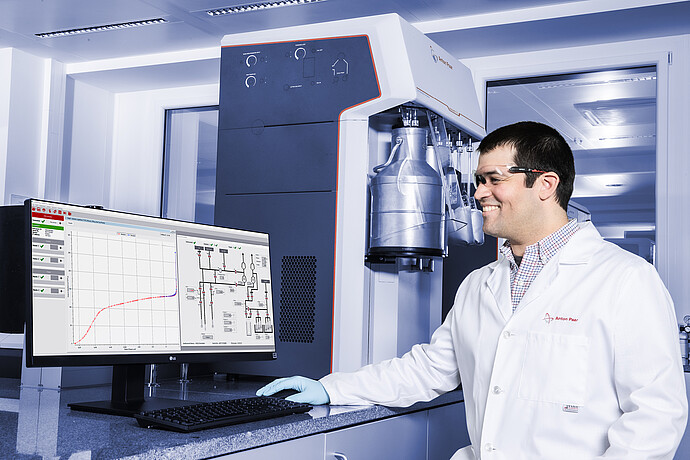
Intuitive software makes every analysis absolutely accessible
- Enjoy an updated and streamlined Kaomi software, which makes the whole measurement process easier than ever before
- Optimize measurement definition to suit your needs with DoseWizard’s new standard and advanced modes
- Keep downtime to a minimum with PowderProtect, which prevents accidental loss of powder in the instrument
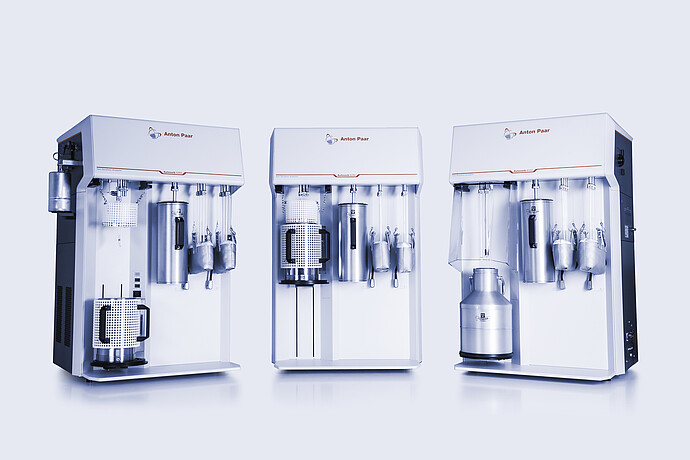
Customization options keep you absolutely adaptable
- With 3 instruments and modular upgrades, the Autosorb adapts to the exact analysis requirements of your porous solids and catalysts
- As your research changes, the instrument’s physisorption and chemisorption features can be field upgraded to fit new materials and applications
- Go beyond standard measurements with enhanced chemical resistance, a built-in vapor source, thermal conductivity detector, or even a fully integrated mass spectrometer
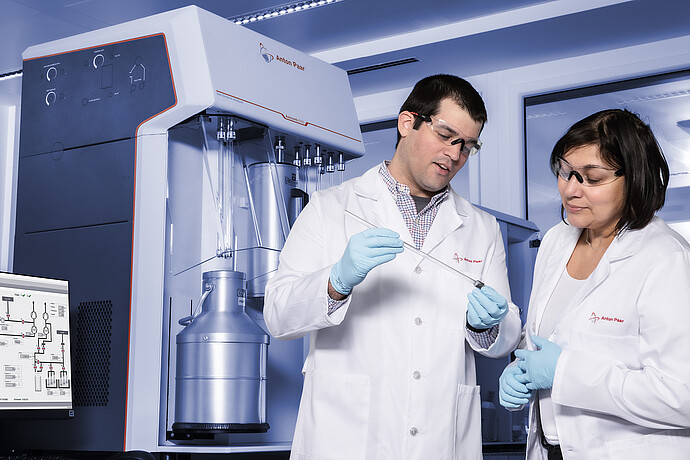
Compliance and quality are absolutely assured
- Comply with 20+ ASTM, DIN, and ISO standards for catalyst characterization and the evaluation of porous solids.
- Get peace of mind with our 3-year warranty so you can avoid unforeseen costs
Technical specifications
Measurement Specifications
| Autosorb 6100 | Autosorb 6200 | Autosorb 6300 | |
| Measurement principle |
|
|
|
| Analysis gas compatibility | |||
| N2, Ar, Kr, CO2, H2, and other non-corrosive gases | Included | Included | Included |
| CH4, C2H6, C3H8, other alkanes, C6H6, C8H10 | Included | Dependent on instrument configuration | Included |
| NH3, C5H5N, C3H6O, and other reactive gases | N/A | Dependent on instrument configuration | Included |
| Physisorption analysis stations | Number: 1, 2, or 3 Independence: Up to 3 gases at 3 analysis temperatures can be used concurrently, 1 analysis gas and temperature per station | ||
| Chemisorption analysis stations | N/A | 1 | |
| Independent p0 station | Yes (dedicated cell and transducer) | ||
| Pressure |
| ||
| BET surface area |
| ||
| Pore size |
| ||
| Active area | N/A |
| |
| TruZone | Yes (active coolant level control) | ||
| PowderProtect | Yes (prevents sample elutriation) | ||
| Analysis dewar |
| ||
| Analysis furnace | N/A |
| |
| Sample preparation |
| ||
| Additional capabilities | |||
| Vapor source | Optional | Optional | Included |
| CryoSync control | Optional | Optional | Optional |
| TCD and loop injector | N/A | Optional | Included |
| Mass spectrometer | N/A | Optional | Optional |
Kaomi software features
| Autosorb 6100 | Autosorb 6200 | Autosorb 6300 | |
| Instrument connection | Control up to 4 instruments from 1 PC | ||
| DoseWizard |
| ||
| Physisorption methods |
| ||
| Chemisorption methods | N/A |
| |
| Available languages | Chinese, English, French, German, Japanese, Korean, Portuguese, Spanish | ||
Technical Specifications
| Autosorb 6100 | Autosorb 6200 | Autosorb 6300 | |
| Dimensions (W x D x H) | 79.5 cm x 70.1 cm x 107.9 cm (31.3 in x 27.6 in x 42.5 in) dependent on instrument configuration | ||
| Weight | 136.4 kg (300 lbs) dependent on instrument configuration | ||
| Operating environment |
| ||
| Gas distribution manifold elastomers | FKM | FKM or EPDM (dependent on instrument configuration) | PFE |
| Analysis manifold construction | Vacuum-brazed manifold block in stainless steel | ||
| Analysis manifold temperature |
| ||
| Analysis manifold valves |
| ||
| Pressure transducer (1550 Torr) -Analysis and degas |
| ||
| Pressure transducer (10 Torr) – MP or XR |
| ||
| Pressure transducer (1 Torr) – MP only |
| ||
| Pressure transducer (0.1 Torr) – XR only |
| ||
| Pirani vacuum gauge – Degas only |
| ||
| Vacuum system |
| ||
| Thermal conductivity detector (TCD) | N/A |
|
|
| Gas ports |
|
|
|
| Gas supply |
| ||
| Air |
| ||
| Electrical |
| ||
| PC connection | Ethernet | ||
| RoHS3 compliant | Yes | ||
| CE / UKCA certified | Yes | ||
| Indoor/outdoor use | For indoor use only | ||
Standards
ASTM
DIN
ISO
Anton Paar Certified Service
- More than 350 manufacturer-certified technical experts worldwide
- Qualified support in your local language
- Protection for your investment throughout its lifecycle
- 3-year warranty
Documents
-
Advantages of QSDFT for Pore Size Analysis of Carbons Application Reports
-
Graphene Characterization Application Reports
-
How to Appropriately Characterize the BET Area of a Microporous Material Application Reports
-
Improving the Structural Characterization of Zeolite with Argon Adsorption Application Reports
-
Material Brief: Activated Carbon - Cyclohexane - Autosorb 6100 Application Reports
-
Material Brief: Activated Carbon - Water Sorption - Autosorb 6100 Application Reports
-
Material Brief: MOF – Ar (87 K) & H2O (293 K) Adsorption – Autosorb 6100 Application Reports
-
Material Brief: Metal Powder - BET Surface Area - Autosorb 6100 Application Reports
-
Metal Organic Frameworks - Pore Size and Volume Measurement - Autosorb 6100 Application Reports
-
Micropore Area and Volume by the t-Plot Method Application Reports
-
Practical Methods to Prevent Sample Elutriation Application Reports
-
Summary of the IUPAC Recommendations for Physical Adsorption Characterization Application Reports
-
Superior Low-Pressure Performance - Autosorb 6100 Application Reports
Consumables & Accessories
Consumables & Accessories
Accessories
Accessories
If you do not find the item you require, please contact your Anton Paar sales representative.
To find out if you can purchase online from your location, check the online availability below.
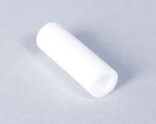
P0 COLLAR, AS6X00
Autosorb 6100 | 6200 | 6300
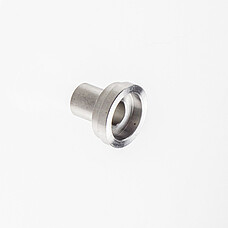
SAMPLE CELL ADAPTOR, 6 mm
Autosorb 6100
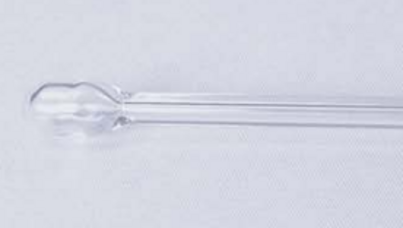
P0 CELL, STRAIGHT SM BULB, 323 mm LONG
Autosorb 6100 | 6200 | 6300
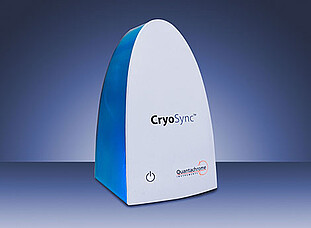
Cryostat Accessory for autosorb iQ:
CryoSync
Autosorb 6100
- Wide temperature range (82 K to >115 K)
- Precise temperature control (temp. stability < ±0.005 K S.D.)
- Perfect for argon isotherm measurements without using liquid argon or for multi-isotherm heat of adsorption experiments
- Runs for over 50 hours without refilling
